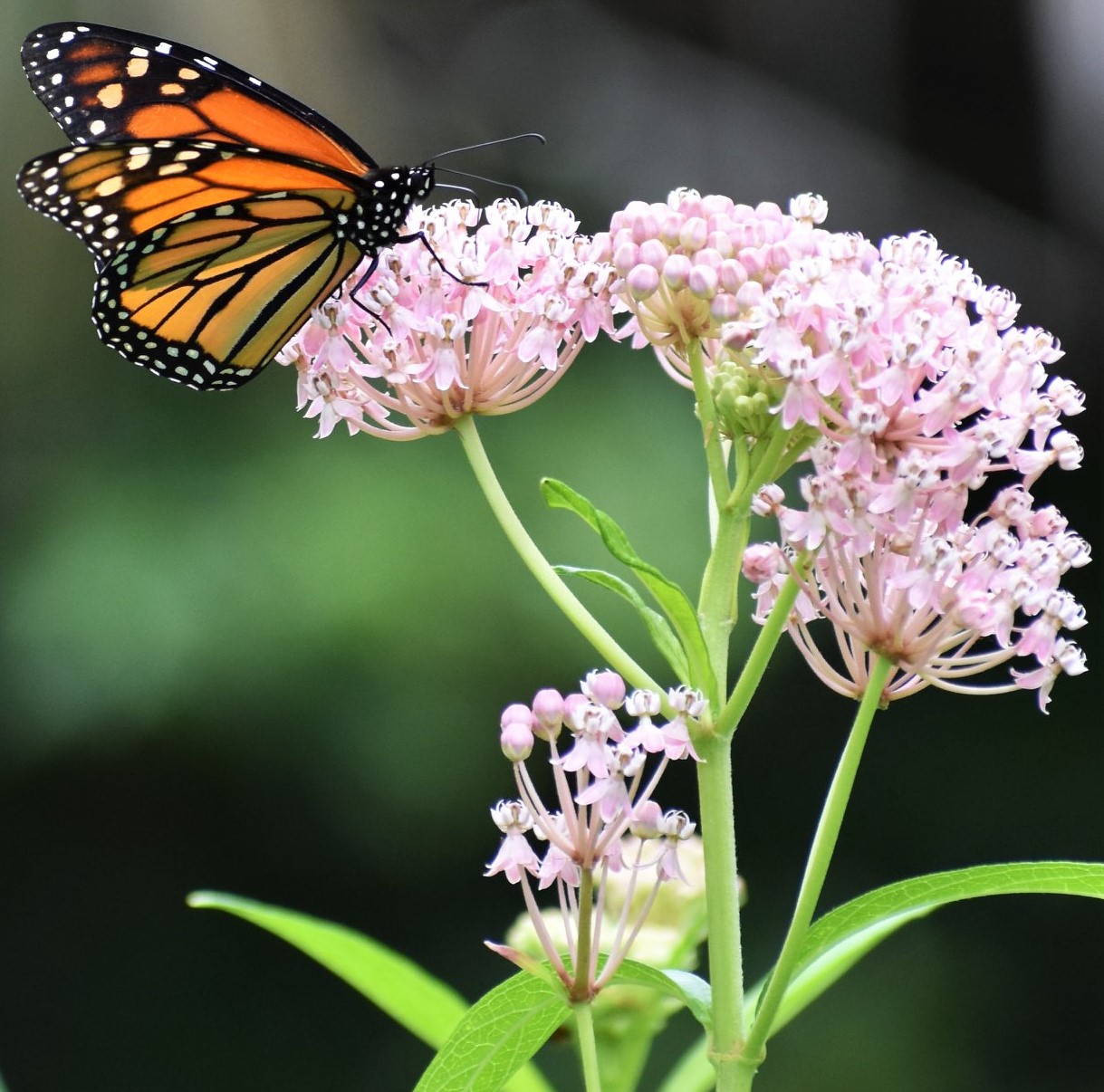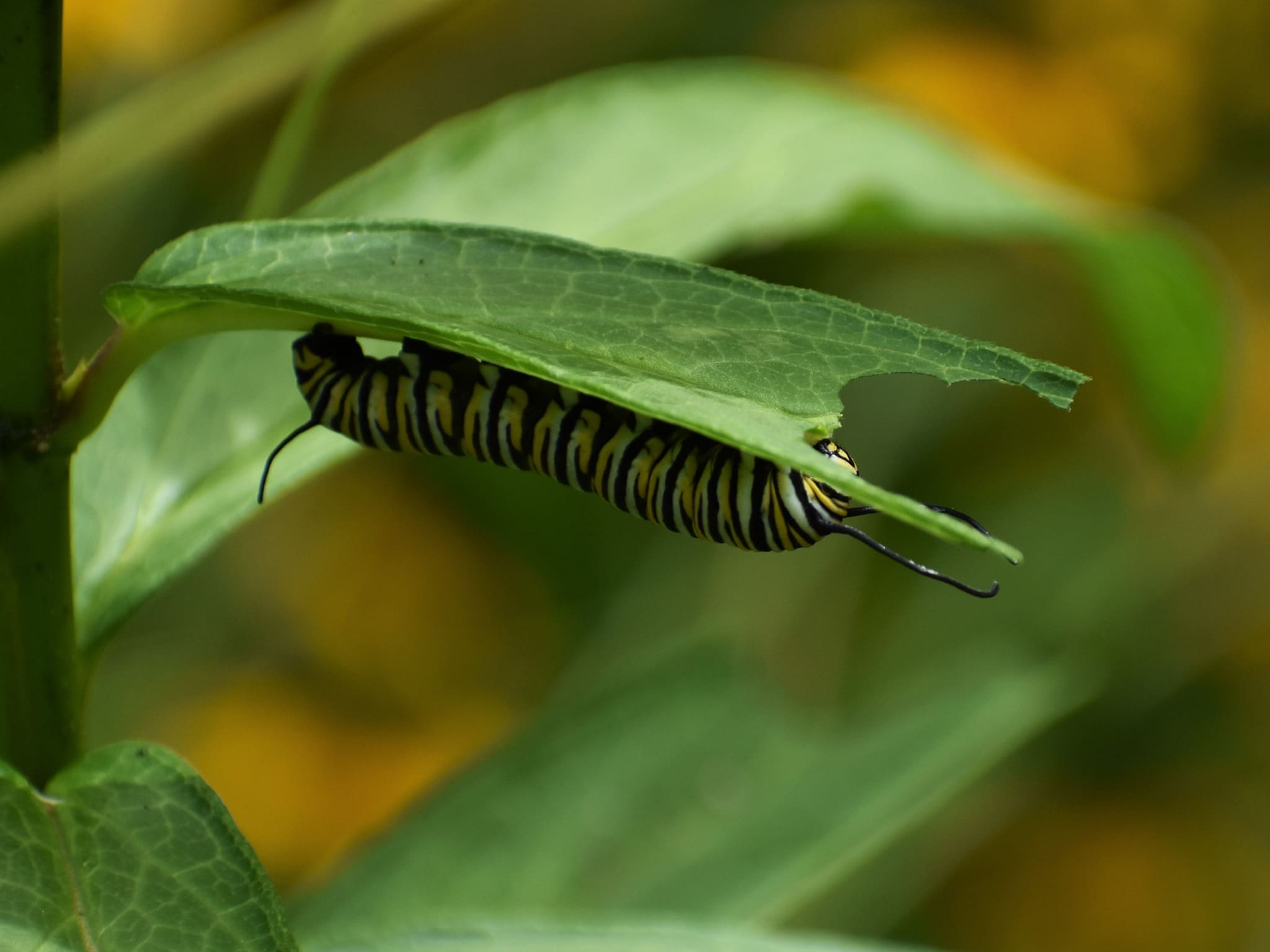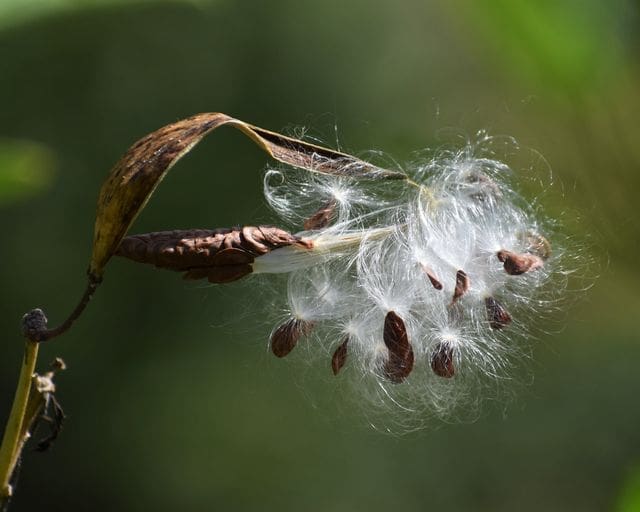Apocynaceae
swamp milkweed
Asclepias incarnata
Other Common Names
rose milkweed
Plant Type
Herbaceous Wildflower
Life Cycle
Perennial
Typical Size
4-5 ft. tall
2-3 ft. wide
Tolerant of
Deer, Occasional Flooding
Inolerant of
Dry Soil
Propagation
By seed
Plant Propagation Notes
Seed propagation notes: Cover seed with a very thin layer of soil (needs light to germinate), keep soil moist, and maintain an ambient temperature of 65-75 degrees. If you collect your own seed, to break seed dormancy either winter sow or apply cold moist stratification for 30 days prior to sowing seed.
Plant Planting Notes
Spacing: 18-36 inches.
Plants/Diseases
Oleander aphids (Aphis nerii) are a common pest of swamp milkweed. Good news: Their presence is an indicator that the plant is free of systemic pesticides! Aphid infestations can be moderated by (1) running your thumb and forefinger along the stem to squish the aphids; (2) supporting the stem with your hand and squirting it with a stream of water, since aphids have soft bodies that are easily damaged; (3) providing habitat for beneficial predators such as lady beetles and hover flies.
Wildlife Benefits
Nectar/pollen source for pollinating insects, Host plant for butterfly larvae, Nectar source for hummingbirds
Leaves
Leaves are simple, opposite, lanceolate, 3-6 inches long, 1/2 inch to 1 inch wide, with entire leaf margins, and attached to a stem by a petiole.
Flowers
Pink umbels of showy small pink flowers, approximately 20 flowers per umbel, with umbels 2-3 inches wide. The bloom period lasts approximately 1 month.
Fruit
Follicle seed pods start green and mature to brown. The pods split to release small flat brown seeds, each attached to white, fluffy hairs that function as parachutes to carry seeds in the wind away from the parent plant.

USDA Hardiness Zones
4, 5, 6, 7, 8, 9
Light Exposure
Full Sun, Part Sun/Shade
Soil Moisture
Medium, Moist
Soil Drainage
Well-drained, Poorly Drained
Soil pH
Acidic (less than 6.0), Neutral (6.0-8.0)
Native in South Carolina?
Yes
Plant Native Habitat
Wet meadows, marshes, swamps, and margins of lakes, ponds, rivers, and streams.
Global Conservation Status (NatureServe)
Secure (G5)
Federal Conservation Status (USFWS)
Threatened
Distribution Notes
Rare in the Coastal Plain, uncommon in the Piedmont, and uncommon in the Mountains
Subspecies
There are two recognized subspecies of swamp milkweed: Asclepias incarnata ssp. pulchra (native to a strip along the eastern U.S. including SC) and Asclepias incarnata ssp. incarnata (native to the central portion of the U.S.). Distribution map from Ivey et al. 1999.



